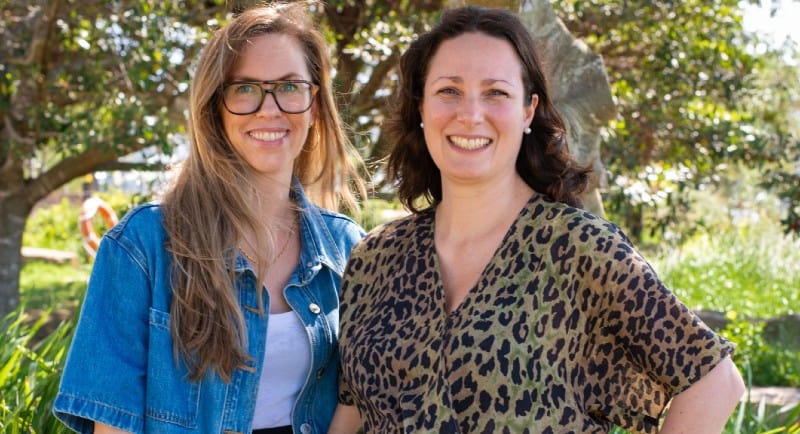By Marie-Celine Merret (head of creative technology) and Vinne Schifferstein Vidal (managing director) at MADE:THIS
In the ever-shifting landscape of the production industry, our approach to content creation is undergoing a radical transformation. Everywhere we look there’s a trade-off. For brands striving to stand out but having to cover all the same channels as competitors. Establishing a presence across a multitude of channels. Between social media feeds, video games and streaming platforms, the avenues are vast and varied and you can’t carpet bomb them all.
We want to push and explore the possibilities of Artificial Intelligence, but budgets are shrinking. We want to create highly customised content, but we need to extract maximum value from every dollar spent. And whilst audiences are voracious consumers of content, spanning numerous platforms and formats, to captivate these audiences, brand content must be relevant, impactful, spark conversation and inspire action.
But many brands and their agencies struggle with the sheer scale and craftsmanship required to engage diverse audiences across multiple platforms. Another trade-off. A significant hurdle is the siloed structure of marketing agencies and brand departments. Too often, strategy, media, and creative teams operate in isolation, failing to collaborate early enough in the process. This disjointed approach undermines the potential for creating data-driven, personalised content that resonates with audiences in the right channels.
We come from the belief that our work – and client success – shouldn’t be dictated by trade-offs. We should be able to combine vision with pragmatism. Strategy with application. Artistry with innovation.
In this day and age delivering quality content at scale requires a unique blend of creativity, technical expertise, and strategic thinking that involves collaboration across all departments. Assembling a team that can consistently deliver compelling content is challenging, compounded by the rapid evolution of production techniques as well as siloed departments. The industry’s constant demand for fresh, innovative content necessitates continual investment in upskilling teams and adopting new tools and methodologies.
The approach to production should involve meticulous planning and a creative concept that is both adaptable and flexible.
Brooke Thompson, strategy partner at Clemenger, explains how a clear creative idea enables that flexibility: “Consumer attention is fleeting, and consumption is no longer linear. We interact with multiple touchpoints at any one time. Our ideas need to be able to do the same and importantly, tell a clear and consistent story about a brand when they do.
“We need to make work fit for those places and that’s not just about format. We make magic when we can marry our ideas with our understanding of the consumer context – their attitudes, motivations, and consumption behaviours – to increase the relevance of our work, and engagement with the brand world’s we wish to create. When we do, we create work that is more memorable for consumers and ultimately more effective for our clients.”
“We believe that by adopting smart production tactics, particularly in the pre-production phase, we should aim to maximise content budgets, providing brands with a wealth of content that can be seamlessly integrated across various channels considering that channel planning upfront.”
Ainslee Littlemore, head of film at MADE:THIS, explains, new”By planning content and applying an atomic design approach, we provide brands with the flexibility to scale their content as needed by making it adaptive.”
This is especially potent in personalisation today. By integrating automation and AI into workflows, working closely with strategy, creative and media teams achieving personalisation at scale becomes not just a possibility but an efficient reality for brands.
Jacquie Ford, head of consumer operations at News Corp says, “In this attention economy, the need for personalisation at scale has transformed the media landscape into a mosaic of individual experiences. Creativity and production are no longer just about reaching the masses, but also about resonating with the individual. Media, creative and tech need to work hand in hand now more than ever to achieve this, in less time and often with fewer resources and budget to do so.”
Dynamic Creative Optimisation (DCO) has been a buzzword for some time, but it’s becoming increasingly viable as brands invest in their data and Martech infrastructure. The bottleneck is no longer technology or media integrations, but the vast amount of content needed to make DCO worthwhile and provide a solid return on investment.
Versioning of creative content can be monumental for brands offering multiple products at various price points targeting diverse audiences across numerous channels. Automated solutions, where technology meets craft, are where the magic happens, budgets are met, and the output returns results.
In conclusion, the production landscape is rapidly evolving, and the demand for smarter, more agile approaches to content creation is clear. By embracing smart production tactics and integrating technology such as automation platforms and AI, collaborating across departments we not only meet the demands of the modern industry but also empower brands to achieve their content goals efficiently and effectively.
–
Top Image: Marie-Celine Merret and Vinne Schifferstein Vidal
